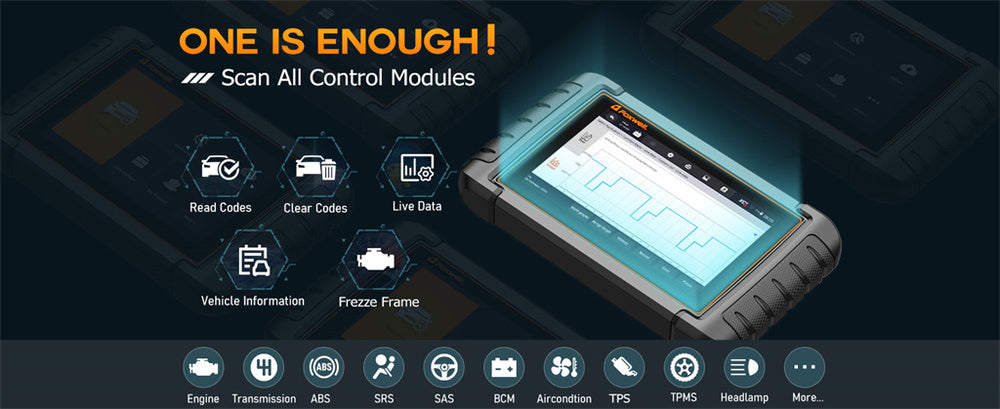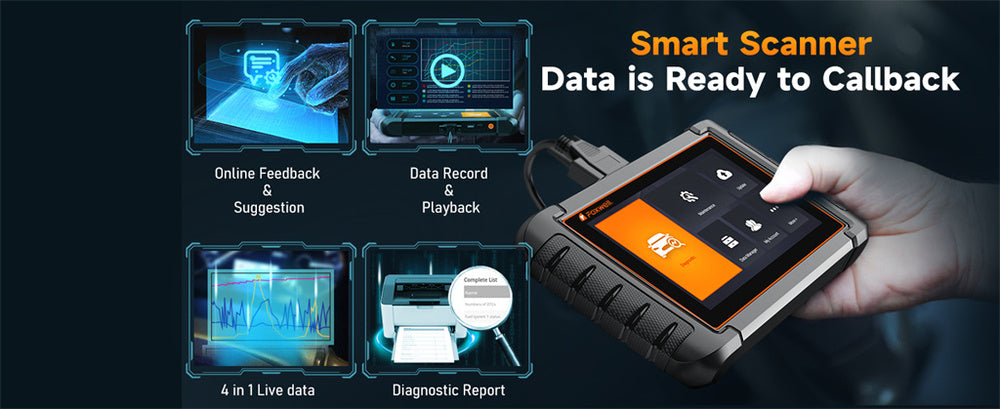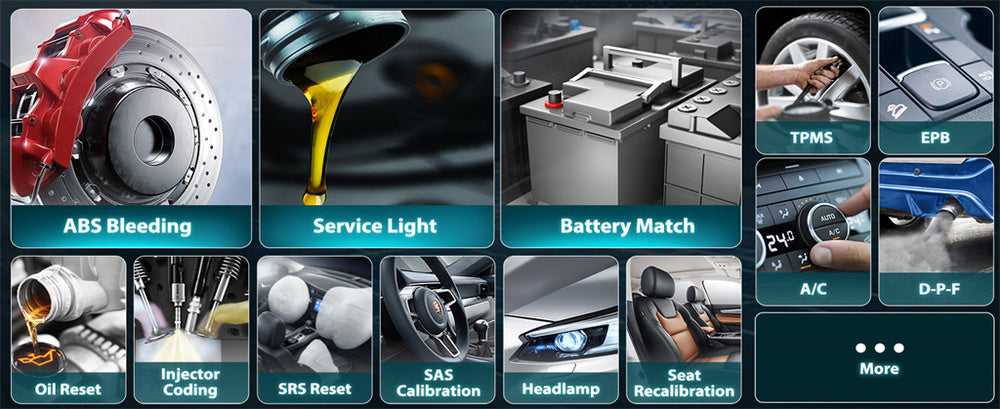Yes, an OBD2 scanner can help you determine if your brake lights are out, albeit indirectly.
While the scanner itself doesn't specifically display a message saying "brake light out," it can identify issues in the brake light circuit, brake light switch, or other related electrical components, which may suggest that the brake lights are malfunctioning.
This diagnostic tool reads trouble codes from your vehicle’s computer, helping pinpoint the underlying problems that could affect the functionality of your brake lights.
Overview of Brake Light Functions

Brake lights are a crucial component of vehicle safety systems. Their primary function is to signal to other drivers that your vehicle is slowing down or coming to a stop.
This warning is essential to prevent rear-end collisions, especially in heavy traffic or during sudden stops. When you press the brake pedal, the brake lights illuminate, providing a clear and immediate indication to the drivers behind you.
Additionally, brake lights enhance the visibility of your vehicle, particularly in low-light conditions such as nighttime, fog, or heavy rain.
The bright red lights are easily noticeable and help ensure that your car is seen by other drivers, reducing the risk of accidents. This visibility is a key aspect of road safety, as it helps other drivers react in time to avoid collisions.
Furthermore, functioning brake lights are a legal requirement in most regions. Driving without operational brake lights can result in fines and increase the risk of accidents.
Law enforcement agencies routinely check for working brake lights as part of vehicle inspections. Ensuring your brake lights are in good working order is not only a safety measure but also a legal obligation.
How an OBD2 Scanner Helps
An OBD2 scanner, like the Foxwell NT809BT, is a valuable tool for diagnosing various vehicle issues, including those related to brake lights.
This scanner can perform comprehensive diagnostics, read and clear trouble codes, and provide real-time data, which can help identify problems in the brake system.
Detecting Electrical Fault Codes
The Foxwell NT809BT can detect electrical issues that might affect your brake lights. It scans the vehicle's systems and retrieves codes related to the brake light circuit.
These codes can indicate problems such as burnt-out bulbs, faulty brake light switches, or blown fuses. The ability to quickly identify these issues allows for timely repairs, ensuring your brake lights remain functional.
Comprehensive Brake System Diagnostics
Modern vehicles are equipped with various sensors that monitor the brake system, including the brake lights. The Foxwell NT809BT can read outputs from these sensors, helping to diagnose malfunctions that might prevent the brake lights from working correctly.
For example, it can detect issues with the Anti-lock Braking System (ABS) or the brake light switch, both of which can impact brake light functionality. This comprehensive diagnostic capability ensures that all potential problems are identified and addressed.
Live Data and Advanced Features
The Foxwell NT809BT provides real-time data and advanced diagnostic features, which are crucial for in-depth troubleshooting.
It allows you to monitor the performance of the brake light circuit and related components while the vehicle is in operation, giving you a clear picture of what might be causing the brake lights to fail. This live data feature is particularly useful for diagnosing intermittent problems that might not be immediately apparent.
Common Brake Light Issues and Solutions
Here are some common issues related to brake lights and how you can address them:
Burnt-Out Bulbs
If your brake lights do not illuminate when you press the brake pedal, the most likely culprit is burnt-out bulbs. Here's a step-by-step guide to checking and replacing them:
- Check the Bulbs: Have someone stand behind your car while you press the brake pedal, or park close to a wall and observe the reflection. If one or both brake lights don't come on, you probably have burnt-out bulbs.
- Replace the Bulbs: Consult your vehicle’s manual to find the correct type of bulb. Most brake light bulbs can be replaced by accessing the light assembly from the trunk. Remove the light assembly cover, take out the old bulb, and replace it with a new one. Make sure the new bulb is securely in place before testing it.
- Test the Lights: Press the brake pedal again to ensure the new bulbs are working properly.
Faulty Brake Light Switch
A brake light switch can fail, causing the brake lights to either stay on continuously or not turn on at all. Here’s how you can diagnose and fix this issue:
- Locate the Switch: The brake light switch is usually found near the top of the brake pedal.
- Test the Switch: Disconnect the switch and use a multimeter to test for continuity. If there is no continuity when the pedal is pressed, the switch is faulty.
- Replace the Switch: Remove the old switch by unscrewing it from its mount and disconnecting the wiring harness. Install the new switch by reversing this process. Make sure it is adjusted properly so that it engages when the brake pedal is pressed.
Blown Fuses
Blown fuses are another common reason for brake lights not working. Here's how you can check and replace a blown fuse:
- Locate the Fuse Box: Check your vehicle’s manual to find the location of the fuse box. It is often found under the dashboard or in the engine compartment.
- Identify the Brake Light Fuse: The manual will also indicate which fuse controls the brake lights.
- Inspect the Fuse: Remove the fuse and check if the wire inside is broken. If it is, the fuse is blown.
- Replace the Fuse: Replace the blown fuse with one of the same amperage. You can find replacement fuses at any auto parts store. After replacing, check the brake lights to ensure they are functioning properly.
Steps to Diagnose Using an OBD2 Scanner

- Connect the Scanner: Plug the OBD2 scanner into the vehicle’s diagnostic port.
- Read Codes: Follow the scanner’s instructions to read any stored trouble codes. Look for codes related to the brake light circuit or related components.
- Interpret Codes: Use the scanner’s code library or an online database to understand what each code means. Codes indicating electrical issues or faults in the brake system can help identify the problem.
- Inspect and Repair: Based on the codes, inspect the related components. Replace any burnt-out bulbs, fix wiring issues, or replace the brake light switch as necessary.
Conclusion
An OBD2 scanner like the Foxwell NT809BT is a valuable tool for diagnosing various vehicle issues, including those that might cause your brake lights to malfunction.
While it might not directly tell you "brake light out," it can provide clues leading to the root cause. Regular maintenance and timely diagnostics can ensure your brake lights and overall brake system function correctly, keeping you safe on the road.
FAQs
Will an OBD2 Scanner Read Brake Codes?
Yes, an OBD2 scanner can read brake codes, including issues with the brake light circuit and ABS.
How to Check If Brake Lights Are Out?
Press the brake pedal and look for the reflection of the lights on a wall, or have someone check for you.
What OBD2 Scanner Tells You Everything That's Wrong with Your Car?
The Foxwell NT809BT provides comprehensive diagnostics for all major vehicle systems.




Leave a comment
This site is protected by hCaptcha and the hCaptcha Privacy Policy and Terms of Service apply.